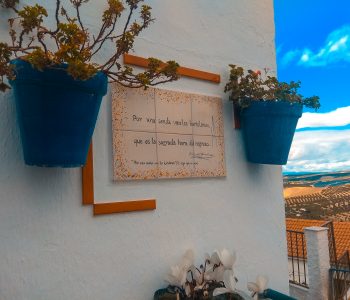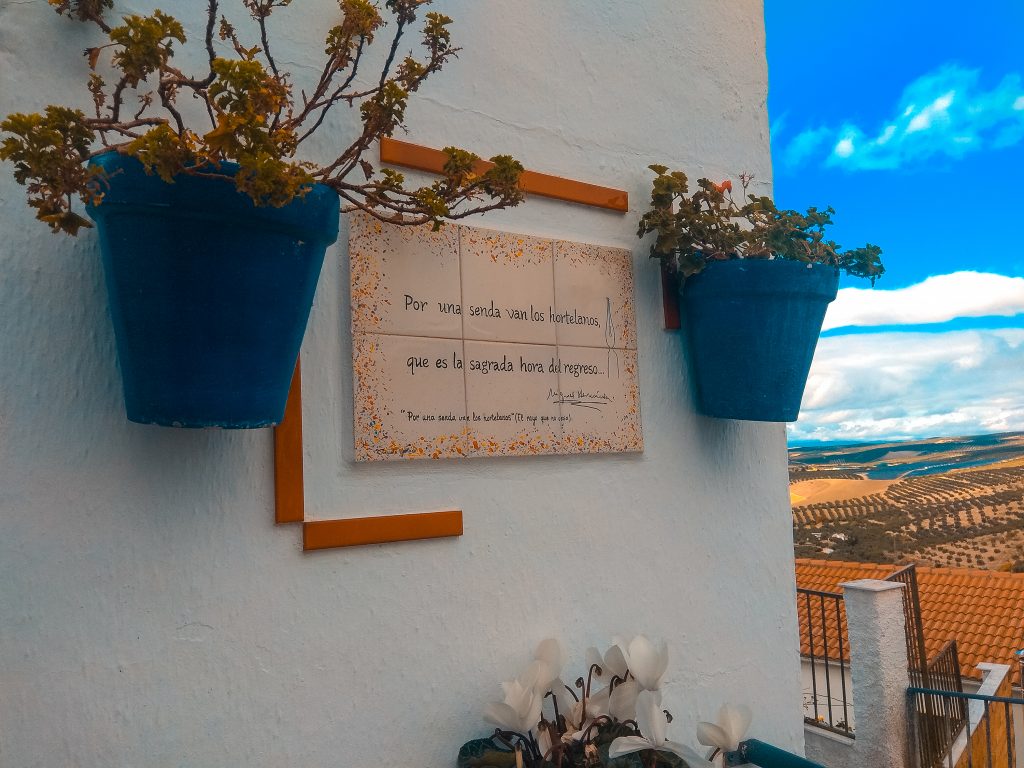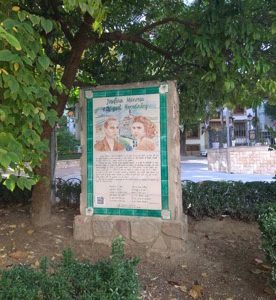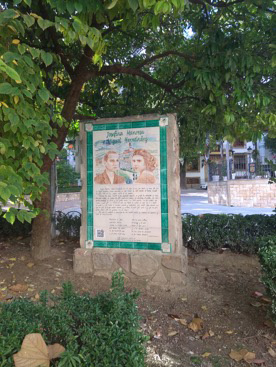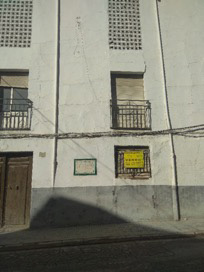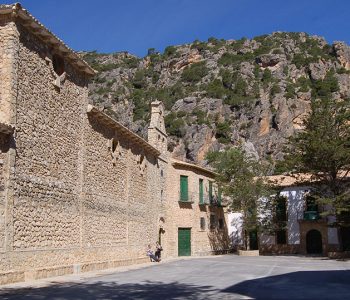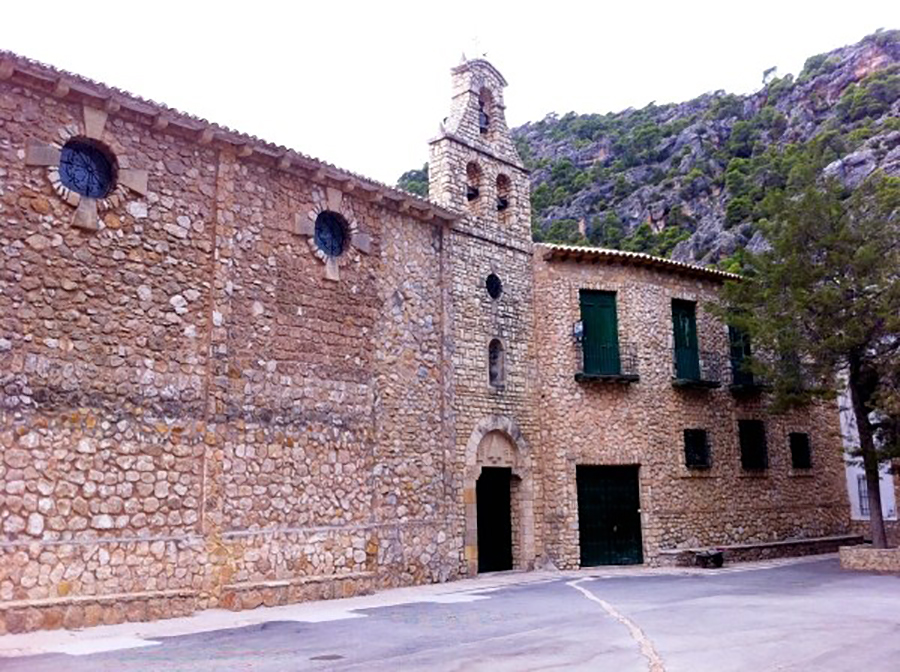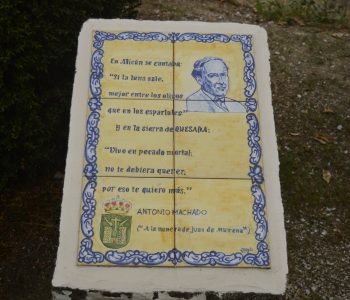 No category
No category
Park on the way to Puerto de Tíscar
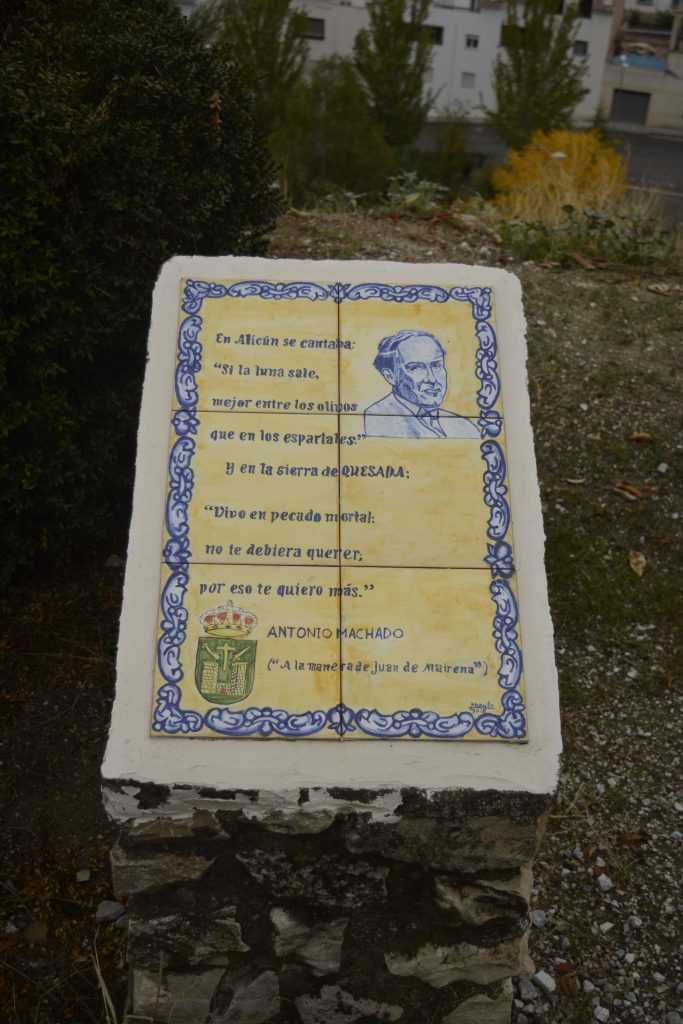
In a recently built park on the way to the port of Tíscar, the City Council of Quesada has honored Antonio Machado with some ceramics where fragments of the poem Apuntes para una geografía emotional de España are reproduced.
IN THE MANNER OF JUAN DE MAIRENA
NOTES FOR AN EMOTIVE GEOGRAPHY OF SPAIN
V
In Alicún they sing:
“If the moon is rising,
better under the olive trees
than in the esparto grass.”
VI
And in the Sierra de Quesada:
“I am living in mortal sin:
I ought not to love you;
therefore I love you more.”


